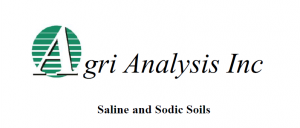- Plant Soil Heath
- 717-299-2112
- info@organicapproach.com
- Organic Approach Website
Saline and Sodic Soils
Garden Soil Preparation
May 25, 2018Cereal Leaf Beetle
September 6, 2018
Saline and Sodic Soils
Soil is a dynamic system that can be affected by several factors including climate, fertilizer applications as well as the quality of irrigation water. These factors, among others, can produce imbalances within the soil system that can have adverse effects on crop health. For instance, while saline and sodic soils are both the result of imbalances within the soil system, their effect on crop health as well as remediation efforts differ. Because remediation for saline, saline-sodic and sodic soils can be very different, laboratory analysis is required to distinguish between these problems in the soil.
Saline soils are the result of high soluble salt content in the soil. This can occur when water evaporates, leaving behind a higher concentration of salts. Higher salt content can also accompany the use of saline irrigation water, or can occur as ground water high in salt derived from parent rock material migrates upwards in the soil system. When present in excess in the soil within the plant root zone, the ability to take up water is hindered, resulting in water-stressed plants. Saline soils can result from high concentrations of sodium chloride (NaCl), calcium chloride (CaCl2), gypsum (CaSO4), magnesium sulfate, potassium chloride and sodium sulfate. However, the high amounts of calcium and magnesium will often reduce the negative effects of excess sodium.
Sodic soils, on the other hand, are the result of high sodium levels in the soil. When sodium is present in excess amounts in comparison to magnesium and calcium the result is a sodic soil. This can typically occur from the use of saline irrigation water, sodium leaching from parent rock material or proximity to a highly salted winter roadway. Sodic soils are often more detrimental than saline soils. Elevated levels of sodium result in a loss of soil structure. Soil structure is responsible for maintaining soil pores that allow for the movement of air, water and nutrients. In sodic soil this network for nutrient transport becomes limited, resulting in soil compaction and adverse effects on plant health. Plants become both nutrient and water-stressed.
Laboratory analyses are available at Agri Analysis, Inc. to determine if saline or sodic-related soil problems are present. Salinity can be determined by testing the electrical conductivity of the soil, while a sodic soil is verified using a saturated paste extract to measure the sodium adsorption ratio (SAR). In addition to individual testing of conductivity and SAR, Agri Analysis, Inc. also offers a saline-sodic soil test package. Visually, these soil problems may not be discernible when collecting a soil sample. Therefore, in most instances, it is recommended to test for both to identify the problem within the soil. The SAR analysis requires a larger sample submission (full soil test kit) in order to conduct either the standalone test or the soil test package.
For questions about testing, sample submission requirements or report-related questions please feel free to contact our office at 717-656-9326, ext. 4.
Agri Analysis, Inc.
Fall 2015
